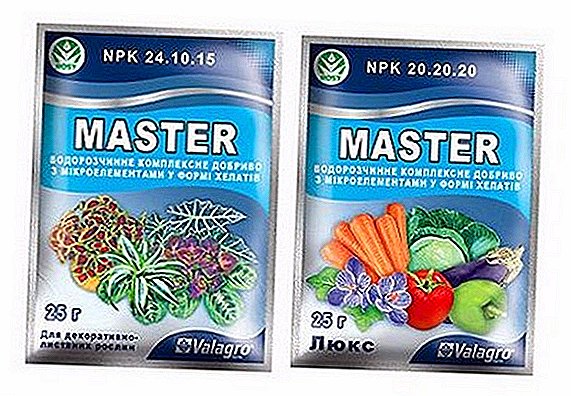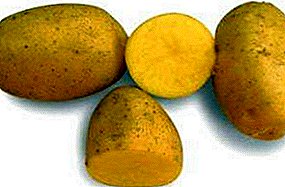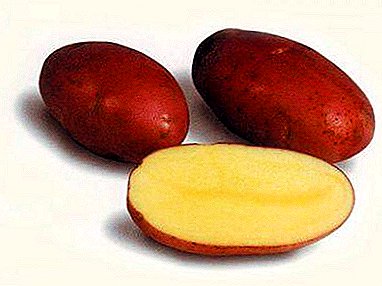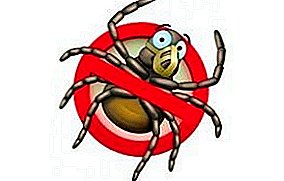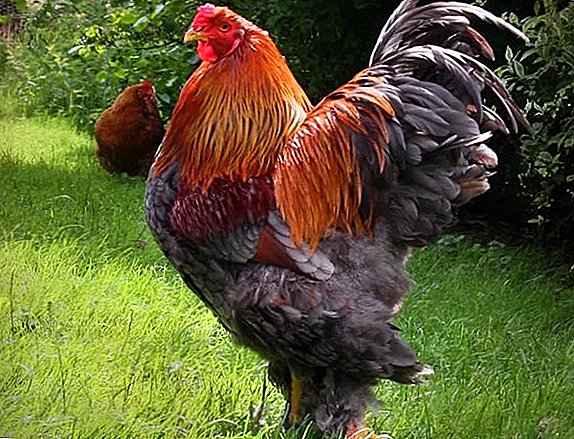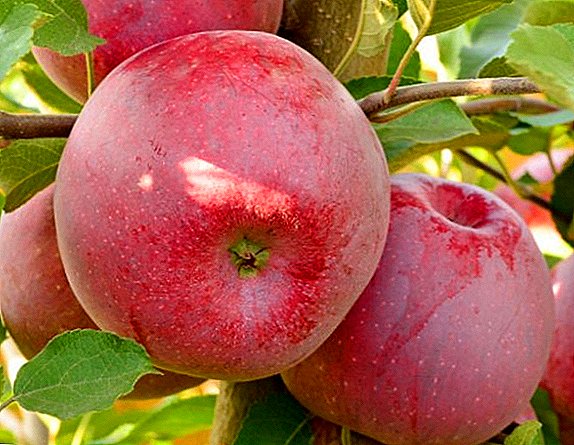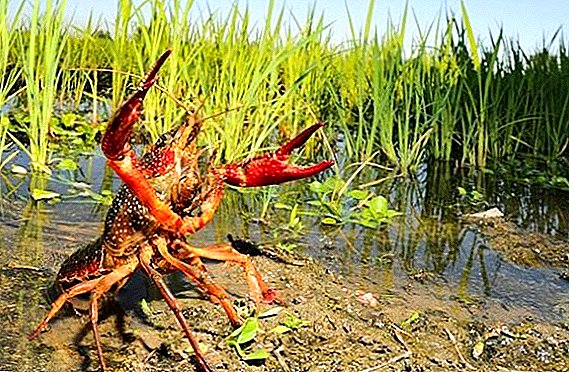 We love crayfish in our country for beer and just like that, even children like their tender aromatic meat. Fans of boiled crayfish can organize the process of their breeding, which over time can turn into a business. Growing crayfish at home is not very complicated and not very expensive, but long-term. It will begin to bring income only in the second year, and will pay for itself in about 6 years.
We love crayfish in our country for beer and just like that, even children like their tender aromatic meat. Fans of boiled crayfish can organize the process of their breeding, which over time can turn into a business. Growing crayfish at home is not very complicated and not very expensive, but long-term. It will begin to bring income only in the second year, and will pay for itself in about 6 years.
There is a constant demand for this product, the competition is not so great, and the income from a well-organized business and well-established sales outlets is stable. For example, a retired person is quite able to cope with such a thing, if he likes it.
Where and what crayfish to buy for breeding
It is possible to breed crayfish not only in natural conditions or close to them, that is, in rural areas, but also in an artificially created environment, for example, aquariums - in city conditions.
Information on the organization of habitat and conditions of detention is not a secret. Having defined themselves, they study the special literature and organize the cultivation of crayfish at home.  To start a business, we actually need crayfish. They can catch yourself or buy. Ideal - the acquisition of larvae - not always possible. A much more frequent option is to purchase adult specimens and raise their offspring.
To start a business, we actually need crayfish. They can catch yourself or buy. Ideal - the acquisition of larvae - not always possible. A much more frequent option is to purchase adult specimens and raise their offspring.
Sources of receiving cancer population:
- Fishing in a river or pond.
- Shopping at the supermarket.
- Purchase on a specialized farm.
Did you know? Salted crustacean caviar is a delicious dish containing many useful ingredients: for example, protein, phosphorus, iron, cobalt, while its caloric content is minimal.
Industrial types of crayfish most popular and in demand:
- Blue Cuban - characterized by rapid growth and omnivorous, prefers a temperature not higher than 26 ° C;
- Australian - is the most meat species, can be bred in aquariums, requires special care and attention;
- Marble - needs large areas and stable temperature, hermaphrodite.

Immediately many individuals should not be bought: the needs of a small farm will be satisfied by 4 dozen males and 8 dozen females, which can be easily recognized in late spring by the eggs under the tail.
It is very important to observe the ratio of males to females in a ratio of 1: 2.
How to breed crayfish
For breeding arthropods, you can use a suitable natural pond, build an artificial one that meets all the parameters for successful implementation of the idea, you can also do this in urban environments, growing them in aquariums. Each of these methods is good, and each has its own characteristics and disadvantages.
Breeding in reservoirs
Pond - natural and most suitable habitat for crayfish. At the same time it should be clean water, in a dirty livestock, if it does not die entirely, it will significantly decrease.
Important! Crayfish may exist in parallel with fish, but it is advisable to remove from the pond predators that feed on crayfish and their caviar.In winter, they should hibernate, while refusing food. Naturally, the weight at this time decreases. In areas where winters are characterized by severe frosts, the breeding of crayfish in the pond is impractical: the reservoir freezes to the bottom, and the livestock die.
 Breeding in the pond has positive sides:
Breeding in the pond has positive sides:- the cost of maintaining the reservoir in the appropriate state is not too high;
- in ponds, water purification occurs naturally;
- feeding animals also does not require any significant costs due to natural food.
Disadvantages of this method:
- long period of growth of arthropods;
- low population density per unit area;
- long payback business.
For a comfortable well-being in the pond animals require the following conditions:
- The area of the pit from 50 square meters, its depth from 2 meters.
- It is desirable that the pond is located on its own site to avoid trouble with poachers.
- Grass should be planted around the circumference of the pit.
- The shore should be clay.
- The bottom should be equipped with stones, sprinkled with sand for the possibility of shelter and construction of holes.
An artificially created reservoir should be equipped at the construction stage with a drainage system to control the quality of water and the possibility of its replacement. Water needs periodic replacement, which is made monthly in the amount of 1/3 of the total.
Important! In no case can not change the water completely, it will have a detrimental effect on the prevailing microclimate and is fraught with the loss of livestock.
Arguments in favor of an artificial reservoir:
- its creation does not entail serious costs;
- the diet is enriched by the resulting natural feed, which saves on the purchase of feed;
- laboriousness of the breeding process.
 Arguments that make you think about the feasibility of breeding crustaceans in an artificial reservoir:
Arguments that make you think about the feasibility of breeding crustaceans in an artificial reservoir:- not all regions are suitable for this business - one should not allow the final freezing of the pond in winter;
- the inexpediency of the construction of the reservoir in a sunny place;
- possible difficulties in selecting a suitable site;
- low density of habitat per square meter
- inability to control temperature.
Requirements to be met by an artificial reservoir:
- Sandy or clayey beaches, shaded by vegetation.
- Stony bottom.
- Clean and environmentally friendly.
- Ability to construct at the bottom of the hole.
- Lack of pathogens.
Populating a pond with crayfish should not exceed the density of their landing. The best option is the density of 5 to 7 copies per square meter. Subsequently, experienced farmers review these standards, however, when starting a business, it is desirable to comply with them.
It is advisable to breed breeds that grow quickly - those that are bred for artificial breeding.
One female can produce about 30 units of offspring. However, they will grow to the desired state not earlier than in three, but more often in six years, so one should have both knowledge and patience to breed crayfish at home. 
Aquarium Breeding
Cultivation of crayfish in an aquarium implies artificial conditions that the wards should provide. Constant microclimate in the aquarium will allow you to get a steady income at any time of the year.
To organize a cancer farm you need a room, you can rent it.
The volume of aquariums must be at least 250 liters. The bottom is equipped with stones, sand, clay, snags - imitate the natural habitat. For successful breeding aquarium should be three: for adults, for mating and for young.
The density of the aquarium can be up to 350 copies per square meter. The method of aquarium breeding requires a businessman a decent amount of time that he can devote to their pets.
Important! The peculiarity of breeding crayfish in an aquarium is that they do not need to hibernate and gain weight much faster.
Habitat requires compliance with the following conditions:
- optimum temperature;
- clean filtered water supplied with oxygen;
- balanced feed;
- vitamin supplement.
The disadvantage is the area bounded by the size of the aquarium. To expand production, the habitat should be expanded.
Important! The lowest rate allowed for crayfish is -1 ° C: at this temperature, they do not die, but they do not multiply.
What to feed the crayfish
Crayfish are mainly herbivorous animals, but in nature they can include various organic remains, carrion in their diet. With an acute shortage of food cannibalism is possible. In general, they eat everything they can reach, since they are not hunters.  In nature, it is:
In nature, it is:
- earthworms;
- various greens;
- insect larvae;
- small fish and snails.
Having seized prey with the help of a claw, they pinch off small pieces from it and eat them. Obviously, arthropods feed on what their nature feeds - to feed the cancer at home is not particularly difficult.
The diet of animals in captivity consists of:
- crushed steamed grain;
- meat and meat products;
- boiled potatoes;
- fish;
- grated carrots;
- compound feeds;
- special feeds;
- larvae, worms, insects, snails.
Food for crayfish is sold in fishermen shops, combines, and other specialized places.
Reproduction (mating) of crayfish
Crayfish mate annually, more often in the fall. One female produces 110-480 eggs, most of which die without giving birth. The average number of adult cancers produced by one female is 30.
The female is smaller in size than the male. The latter has two distinct pairs of legs near the abdomen, with which it keeps the partner during fertilization.  Grooming is not practiced: after catching up with the partner, the male keeps her and tries to fertilize, the female seeks to avoid contact so much that the mating process can cost her her life.
Grooming is not practiced: after catching up with the partner, the male keeps her and tries to fertilize, the female seeks to avoid contact so much that the mating process can cost her her life.
The calf is fertilized inside its body, if the partner is stronger, after which it immediately goes into its burrow during the daytime, when the sexual aggression of the males thrives, is afraid to leave it.
Did you know? An ordinary male is able to cover two females, and this drains him so much that he can eat a third partner after fertilizing.
Most male does not take any part in the breeding - the care of the offspring entirely fall on the mother.
About a month after fertilization, the female spawns. In this case, the eggs are glued to the pseudopods on the abdomen until the larvae of the eggs hatch. This is a very difficult time for the expectant mother: she has to supply the eggs with oxygen, continuously working with the tail, protecting them from the predators' encroachment, and performing hygienic procedures for cleaning from mold, dirt and algae growths. In this part of the caviar is lost and dies.  At best, it saves 60 eggs, from which the larvae will emerge. After a week or two, they begin to leave the mother, hiding from the dangers of the outside world under her tail, and leave her after a month or two. By that time, their length is about 3 centimeters, and they are equipped with survival skills.
At best, it saves 60 eggs, from which the larvae will emerge. After a week or two, they begin to leave the mother, hiding from the dangers of the outside world under her tail, and leave her after a month or two. By that time, their length is about 3 centimeters, and they are equipped with survival skills.
In natural conditions, 10-15% of them will survive, but with sufficient nutrition in artificial conditions, save most masonry - 85-90%.
Cancer enters puberty at the age of 3 years. The size of the female should not be less than 67 millimeters. The male grows larger, otherwise it will not cope with the reproduction case.
Taking into account the difficulties of reproduction of arthropods in the wild, we see the expediency of their artificial breeding.
Molting crayfish
Molting time is very dangerous for individuals. Not only the outer shell is dumped, but also the covering of the gills, eyes, esophagus and teeth, with which the cancer crushes food. The only solid substance that remains with him - gastroliths - mineral formations that have the shape of a lens. They are located in the stomach of the animal and are the place of accumulation of calcium, which the animal uses to grow solid parts of the body.
Did you know? The tour was called "crayfish stones" in the Middle Ages. They were valued as a miracle cure that cures all diseases.
Fade cancer is soft and completely defenseless: for this reason, he prefers to sit out a dangerous period in the burrow, so as not to become a victim of predators and cannibal relatives.
In the first year of their life, as they grow rapidly, the crayfish change the shell 8 times, in the second year of life it happens 5 times, in subsequent years - once or twice a year. The first years often die during the first molts, about 10% live to the commercial age on the outside.
While the shell does not harden, the cancer in its burrow grows rapidly, although it does not eat anything. After complete curing of the shell, the growth stops until the next change of the costume.
The largest males can grow up to 21 centimeters, females - up to 15 centimeters.
Additional equipment for effective breeding crayfish
To breed crayfish at home, you need some equipment.
Three aquarium equipped:
- filters that need to be changed three times a year;
- compressors that enrich the water with oxygen;
- devices for monitoring the level of oxygen, water temperature;
- heaters that allow you to organize the desired temperature for individuals and, importantly, for eggs.
At least two, preferably three pools for adults, babies and mating, equipped with:
- water drainage system;
- aeration system;
- attributes that recreate the natural habitat.
 Ponds minimum size of 25 square meters, a depth of at least 2 meters.
Ponds minimum size of 25 square meters, a depth of at least 2 meters.It is desirable that the pond was not one - at some point it will be necessary to plant the young to save it. The oval shape of the pit helps gas exchange to occur correctly.
The pond should be provided with such places for shelter:
- stones;
- clay;
- vegetation;
- sand.
Those who have a soul to the cause of breeding crayfish should definitely try to organize this process. Though not quick, it is not too laborious, and it does not require a lot of finance, but it will thank you with stable profits and the pleasure that your favorite business brings.




